As we find ourselves at this time in the world where a pandemic has changed the intricate details of our lives, we are forced to focus on the essentials of life. Guidelines about how to safely interact with others and protect ourselves from the virus are governing the daily actions of people worldwide. Businesses, purchases, travel, and most activities have been labeled as essential or non-essential. Halting non-essential engagements has caused businesses to shutter, cities to become vacant, sports to be postponed, and shoppers to cautiously venture into grocery stores and purchase inordinate amounts of toilet paper.
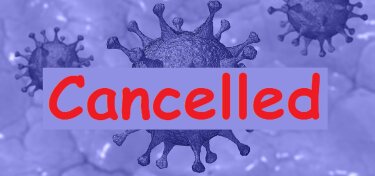
With many of our typical activities labeled non-essential, I wonder if our normal lives have been filled with an abundance of non-essential things/activities. Are birthday parties, hair salons, music concerts, and sports simply fluff that fills the spaces between the essentials of life? Or, is there more to living life than meeting/obtaining the essentials? Though we must fulfill our physiological and safety needs to stay alive (i.e., the essentials), if we neglect or cannot fulfill other human needs (e.g., social, intellectual, emotional, self-fulfillment), are we whole?
Because I am a physical educator, my mind has been drawn to the impact the pesky COVID-19 pandemic is having on physical activity (PA) and sport. During this time of caution, PA is one part of our lives that has been deemed both essential and non-essential. As non-essential, sporting events and seasons, from professional to recreational, have been canceled or postponed throughout the world. NBA, NHL, MLS, and MLB seasons were suspended or delayed. The NCAA basketball tournament was canceled. High school spring sports throughout the nation were canceled. The 2020 Olympic Games are postponed. Thousands of recreational races and youth sports leagues were canceled or are delayed.
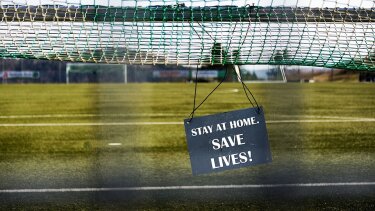
The financial toll related to the crisis has spurred concern over the very existence of some sports such as those sponsored by colleges and universities. Further, the number of people worldwide who work in sports, who are negatively affected by the pandemic – must number in the tens of millions. Athletes, coaches, scouts, directors, trainers, sports officials, media workers, administrators, marketers, facilities managers, and others are unemployed and waiting to know what happens next. Will they return to their sports and to their jobs? Will those sports and jobs be altered? Will they be able to pick up where they left-off or has the world they knew to become a memory?
For athletes, the devastation is insurmountable. The dreams of hopeful professional and high school athletes alike have shattered. Publicly, many athletes have supported the decisions to delay or cancel events, and indicate how they will use this time to prepare themselves for future events (McCarriston, 2020). However, behind the scenes, another story may be unfolding for athletes. I cannot imagine the heartache felt by each athlete as an important part of their life was suddenly unavailable due to no fault of their own.
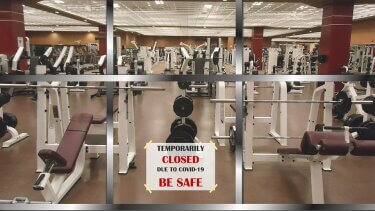
Recreational athletes and exercisers have also found significant alterations to their normal PA engagements. Recreation facilities, gyms, and some outdoor spaces are in lockdown as a measure to curtail the spread of the disease. Races and events, large or small, have been postponed or canceled. I have spoken with many recreational athletes who indicate feeling a mental and physical draining of motivation and desire because of these cancellations.
Perhaps this response is tied to the mental strain that has resulted from the fear and uncertainty surrounding the coronavirus pandemic. Karestan Koenen, a professor of psychiatric epidemiology at the Harvard T. H. Chan School of Public Health indicates that the mental health impact of the pandemic is multifaceted. Along with the effects of social distancing, fears over job loss, and the potential for getting sick may provoke and exacerbate depression and anxiety (Powell, 2020). Depression and anxiety can cause lack of motivation for doing normal daily activities, loss of interest in pleasurable engagements, tiredness, and unexplained physical problems (Mayo Clinic Staff, 2020). Essentially, the mental strain and stress from our lives being forced into the unknown is overwhelming. PA can be part of the antidote for depression and anxiety and is essential for healthy functioning bodies. However, Chen et al. (2020) suggest that the stay home order meant to curtail the pandemic may have the unintended consequence of reducing physical activity engagement. When forced to be home, people may spend “…excessive amounts of time sitting, reclining, or lying down for screening activities…” (Chen, et al., 2020, p. 103). Further, insufficient exercise may increase the risk of catching the feared virus (Simpson, 2020).
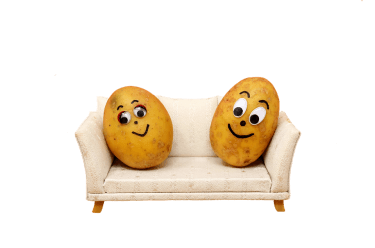
Because of the situation, many sport and physical activity organizations have provided information to help people stay active and involved while stuck at home. Organizations such as the Online Physical Education Network, have shared numerous resources to help include physical education at home. The Aspen Institute is compiling resources for those involved in youth sports to help children cope with the loss of sport and find ways to still be physically active and involved in their sport (see https://www.aspenprojectplay.org/coronavirus-and-youth-sports#). Numerous companies have created opportunities for engaging in physical activity at home at a discounted price, or even for free. Kids can do daily PE with Joe and adults can practice Yoga with Adriene by simply opening YouTube. For those who like a little competition with their physical activity, numerous virtual races and events have been created. Although they have existed prior to the pandemic, companies have capitalized on our home detention by creating events like the Unicorn Virtual Race, The Social Distancing Run, and Bigfoot: The Social Distancing Champion’s Running Challenge, whose logo depicts the mythical hominid in his iconic stride carrying a roll of toilet paper.
Individuals are also taking the initiative to engage in physical activity while quarantined at home. People are walking, playing backyard badminton, and flying kites. Dogs are certainly benefiting from their humans spending more time walking. One meme humorously depicts the situation: a dog is shown hiding on top of the kitchen cabinets as the owner encourages him to come down. The caption reads: NO, I’m NOT COMING DOWN! We’ve been on 20 walks today. Leave me alone!
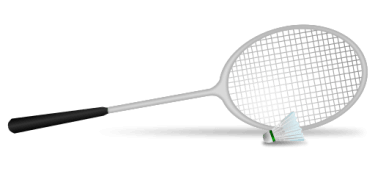
However, the emotional rollercoaster that we all are feeling might diminish our initially high motivation to be physically active. I have spoken to many friends about the effects of riding the emotional rollercoaster. During the ups they accomplish everything on their list, their children complete all their schoolwork, and they finish a fulfilling workout. During the downs, Netflix dominates the day, they stew on the latest news announcements, eat a family-sized bag of chips, and are unmotivated to do anything physically active. The ups and downs are measured in days or even hours. We truly are on a wild rollercoaster ride!
Using PA as part of the antidote to the anxiety and depression resulting from these uncertain times is certainly important. Further, the immunity benefits PA can offer should stimulate everyone to be more active. For the sake of our overall health, PA is an essential activity. However, PA and sport may be more essential to our lives than just offering objective measures related to our health because they offer us opportunities to play. Many philosophers have explored the importance of play through physical activity. Various theories are discussed on why we play even though expending energy on non-essential activities is counter to survival. Further, cultural expectations have governed how and when people can play. For example, Colonialist era beliefs couched play as frivolous and only to occur if it “…accomplished useful ends…” (Gorn & Goldstein, 2013, p. 32). Yet, focusing on the objective and observable effects of play while neglecting “…its intrinsic and holistic nature … limits [our] understanding of play…” (Thomas, 1983, p. 72). Philosopher Johan Huzinga spent considerable time contemplating and investigating what play means to human lives. In 1938 he wrote Homo Ludens: A Study of the Play Element in Culture, which became a landmark work for understanding play (Anchor, 1978). Within the 1950 edition of Homo Ludens, Huzinga (1995) says play is “…an integral part of life… it adorns life, amplifies it, and is to that extent a necessity both for the individual… and for society” (p. 6).
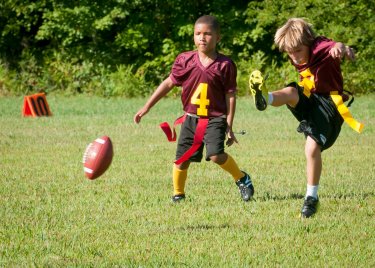
As a potential form of play, PA and sport offer us access to unique subjective knowledge and sensuous experiences found nowhere else. Perhaps this is why no matter the physiological or cultural limitations imposed, people have always found ways to run, jump, thrown, catch; to play! Because it is a unique part of being human, physically active play needs no other justification besides that it offers humans opportunities to experience their subjective selves. Because it is foundational to what it means to be human, I argue that physically active play is essential, even in the time of a pandemic. Clearly, we must acquire other essentials to meet our physiological needs. However, if that is our only focus, what is the point? Let me use my experiences backpacking as a way to illustrate. Through backpacking, I have spent many days exploring the magnificent wonders of nature. My companions and I willing strap forty to fifty pounds of gear to our backs and walk for hours away from civilization and into the heart of mother earth. Although deprived of some basic niceties of home (e.g., hot showers and comfy beds), backpacking allows us to experience a unique physical challenge and to relish in the wonders of nature.
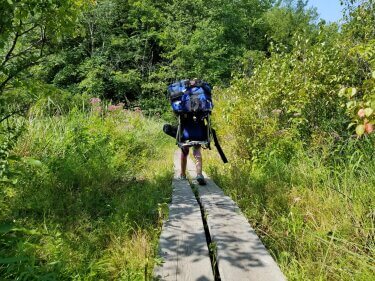
Yet, the need to acquire the essentials is vital to our ability to do the activity. Our trips are carefully planned to ensure we have sufficient access to water, adequate calories from our food, and ready access to shelter. Planning ahead allows us to have free and open minds while hiking. However, despite our careful preparations, times arise when our need for these essentials consume our minds and drive each step. Such times can arise instantly and without warning, like when we notice an eerie thundercloud building overhead or discover that our watering-hole is dry. Though we must prepare for and acquire the essentials to do backpacking, this is not the purpose of the activity. We backpack to enjoy nature, find peace and serenity, bolster companionship, and experience the physical challenge of the activity. Backpacking allows me to experience my body at its fullest potential, which offers personalized learning and accomplishment. Through backpacking, perspectives can change, companionships are forged, nature infiltrates your soul, and you uniquely experience your body. The sensuous, personal aspects are lived.
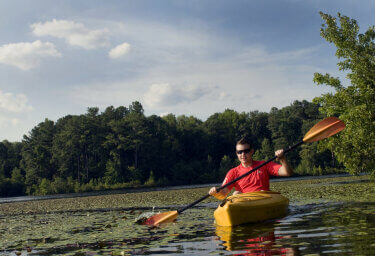
Although the essentials have to be prepared, acquired, and at times sought while neglecting everything else, they are only part of the backpacking experience. Without them, we could not have the sensuous, personal experiences. Yet, without the sensuous personal experiences, we would not go backpacking. Therefore, both are essential. Though we are living in a situation where we are hyper-focused on securing the basic necessities and engaging in activities that will keep our bodies physiologically alive, we cannot neglect other essentials that make our lives worth living. So, let us play for a reprieve from stress, and to protect our physical and mental health. But, let us also play because it is part of the experience of being human. When we cancel play, we lose focus on what it means to be human. As Kretchmar (2006) states, “One of the greatest things about physical activity and play is that they make our lives go better, not just longer. It is the quality of life, the joy of being alive, the things we do with our good health that matter to us as much or more than health itself (p. 6).”
References
Anchor, R. (1978). History and play: Johan Huzinga and his critics. History and Theory, 17(1), 63-93. doi:10.2307/2504901
Chen, P., Mao, L., Nassis, G. P., Harmer, P., Ainsworth, B. E., & Li, F. (2020). Coronavirus disease (COVID-19): The need to maintain regular physical activity while taking precautions. Journal of Sport and Health Science, 9(2), 103-104. doi:10.1016/j.jshs.2020.02.001
Gorn, E. J., & Goldstein, W. (2013). A brief history of American sports. Urbana, Chicago, Springfield, IL: University of Illinois Press.
Huizinga, J. (1995). The nature of play. In W. J. Morgan, & K. V. Meier (Eds.), Philosophic Inquiry in Sport (2nd ed., pp. 5-7). Champaign, IL: Human Kinetics.
Kretchmar, R. S. (2006). Ten more reasons for quality physical education. Journal of Physical Education, Recreation, & Dance, 77(9), 6-9. Retrieved from http://dx.doi.org/10.1080/07303084.2006.10597932
Mayo Clinic Staff. (2020). Depression. Retrieved from Mayo Clinic: https://www.mayoclinic.org/diseases-conditions/depression/symptoms-causes/syc-20356007
McCarriston, S. (2020, March 24). Tokyo Olympics: Athletes respond to 2020 Games being pushed back due to coronavirus outbreak. CBS Sports. Retrieved from https://www.cbssports.com/olympics/news/tokyo-olympics-athletes-respond-to-2020-games-being-pushed-back-due-to-coronavirus-outbreak/
Powell, A. (2020, April 16). Feeling more anxious and stressed? You’re not alone. The Harvard Gazette. Retrieved from https://news.harvard.edu/gazette/story/2020/04/rising-mental-health-concerns-in-the-coronavirus-era/
Simpson, R. J. (2020, March 30). Exercise, immunity and the COVID-19 pandemic. Retrieved from American College of Sports Medicine Blog: https://www.acsm.org/blog-detail/acsm-blog/2020/03/30/exercise-immunity-covid-19-pandemic
